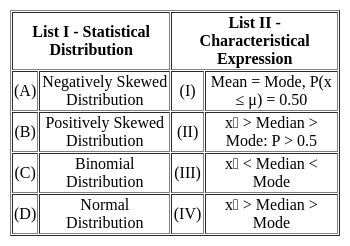Kerala SET Paper 2 Mock Test - 4 (Commerce) - KTET MCQ
30 Questions MCQ Test Kerala SET Mock Test Series 2025 - Kerala SET Paper 2 Mock Test - 4 (Commerce)
For the purpose of extending rural banking and agro finance, the NABARD :
Consider the following statements with reference to the Companies (Amendment) Act, 2015 :
(I) The minimum paid-up share capital requirement has been done away with
(II) The company cannot declare a dividend for a financial year unless the losses and depreciation carried over from past years have been set-off against the profits of the company,
(III) thresholds will be prescribed for reporting fraud to the Central Government, or the audit committee, or the board of directors.
(IV) Section 11 of CA 2013 has been retained.
Which of the above statements are correct
The Fortune at the Bottom of Pyramid : Eradicating Poverty’ has been written by
Which one of the following statements is false?
Assertion (A): Weighted average cost of capital should be used as a hurdle rate for accepting or rejecting a capital budgeting proposal.
Reason (R): It is because by financing in the proportions specified and accepting the project, yielding more than the weighted average required return, the firm is able to increase the market price of its stock.
The accounting principle that states companies and owners should be accounted for separately is:
Direction: Given below are two statements, one labeled as Assertion (A) and the other labeled as Reason (R). Choose which of the following alternatives is correct?
Assertion: Game theory provides an opportunity to analyze the oligopolistic firms.
Reasoning: Game theory is the study of how people behave in strategic situations.
Given below are two statements.
Statement I: GST is the destination-based tax on the consumption of goods and services.
Statement II: 'I' stands for integrated in IGST.
In light of the above statements, choose the correct answer from the options given below:
Arrange the following steps of employee training in the proper sequence:
A. Familiarize the employee with equipment, materials, tools, and trade terms
B. Create interest and find out what the employee already knows about the job
C. Explain why the employee is being trained
D. Place the trainee/employee as close to the normal working position as possible
E. Explain the whole job and relate it to some other job which the employee already knows
Choose the correct answer from the options given below
Which of the following liabilities are taken into account for acid-test ratio?
(i) Trade Creditors
(ii) Bank Overdraft
(iii) Bills Payable
(iv) Outstanding Expenses
(v) Redeemable Debentures
Capital deficiency of an insolvent partner at the time of the dissolution is to be distributed in the:
Consider the following statements with regard to the “Theory of Absolute Cost Advantage”:
(i) Productive efficiency differed among different countries because of the diversity in natural and acquired resources possessed by them.
(ii) The difference in natural advantage manifests in varying climate, quality of land, availability of minerals, water, and other resources.
(iii) The difference in acquired resources manifests in different levels of technology and skills available.
Identify the correct code from the following :
Which of the following is/are the characteristic(s) of Business Economics ?
i. Business economics is micro economic in character.
ii. It is positive in nature.
iii. It is both conceptual and metrical.
iv. Its contents are based mainly on the theory of firm.
Directions: For the Assertion (A) and Reason (R) given below, choose the correct alternative.
Assertion (A): Comparative Advantage theory states that each country should produce those goods in which it has a comparative advantage.
Reason (R): This is because of the presence of opportunity costs which gives the country a relative advantage in the production of one good.
Choose the correct answer from the following code:
For the following two statements regarding infrastructural services in the country, choose the correct code for the statements being correct or incorrect.
Statement I: Most infrastructure services are provided by public monopolies which generally suffer with severe problems like lack of accountability, low productivity, poor financial performance and over-employment.
Statement II: There is a need now to induce more private sector investment and participation in sharing, accountability, monitoring and management of infrastructure sector.
Match List I with List II:

Choose the correct answer from the options given below:
Indicate the code for proper sequencing for the process of venture capital financing from the following :
(i) Deal origination
(ii) Due diligence
(iii) Screening
(iv) Deal structuring
(v) Exit plan
Choose the correct answer from the code given below:
Under which of the following conditions can a proposal be revoked according to the Indian Contract Act 1872?
A. By the communication of notice of revocation by the proposer to the other party
B. By the failure of the acceptor to fulfil a condition of proposal
C. By the death or insanity of the proposer
D. By the lapse of the time prescribed
E. By notice of revocation after the acceptance is communicated.
What is/are the main difference between the NPAs today and the NPAs of 1990s?
I. The NPAs are equally distributed across priority and non-priority sectors today than in 1990s.
II. The NPAs today are concentrated among large corporate borrowers.
III. The NPAs today are more prevalent in Public Sector Banks while in the 1990s they were concentrated in both private and public sector banks.



















